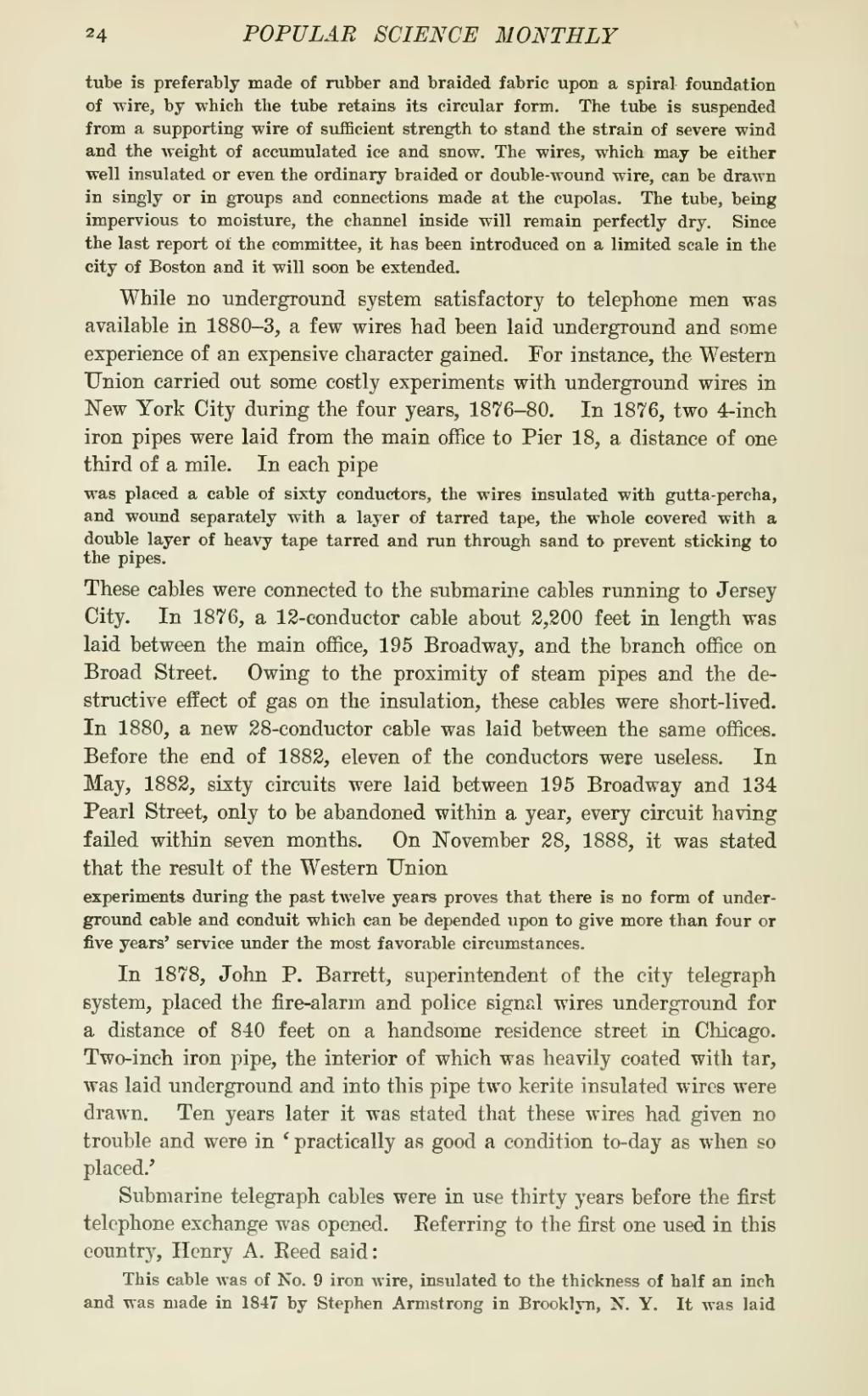While no underground system satisfactory to telephone men was available in 1880-3, a few wires had been laid underground and some experience of an expensive character gained. For instance, the Western Union carried out some costly experiments with underground wires in New York City during the four years, 1876-80. In 1876, two 4-inch iron pipes were laid from the main office to Pier 18, a distance of one third of a mile. In each pipe
These cables were connected to the submarine cables running to Jersey City. In 1876, a 12-conductor cable about 2,200 feet in length was laid between the main office, 195 Broadway, and the branch office on Broad Street. Owing to the proximity of steam pipes and the destructive effect of gas on the insulation, these cables were short-lived. In 1880, a new 28-conductor cable was laid between the same offices. Before the end of 1882, eleven of the conductors were useless. In May, 1882, sixty circuits were laid between 195 Broadway and 134 Pearl Street, only to be abandoned within a year, every circuit having failed within seven months. On November 28, 1888, it was stated that the result of the Western Union
In 1878, John P. Barrett, superintendent of the city telegraph system, placed the fire-alarm and police signal wires underground for a distance of 840 feet on a handsome residence street in Chicago. Two-inch iron pipe, the interior of which was heavily coated with tar, was laid underground and into this pipe two kerite insulated wires were drawn. Ten years later it was stated that these wires had given no trouble and were in 'practically as good a condition to-day as when so placed.'
Submarine telegraph cables were in use thirty years before the first telephone exchange was opened. Referring to the first one used in this country, Henry A. Reed said:
